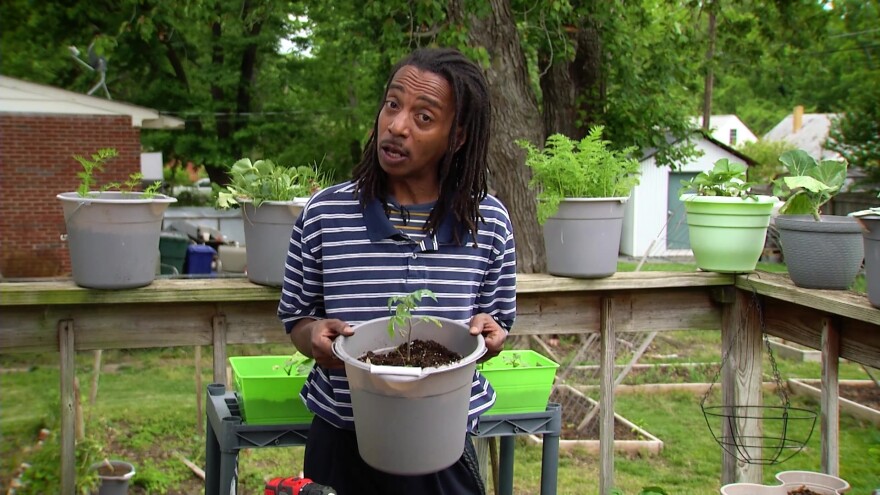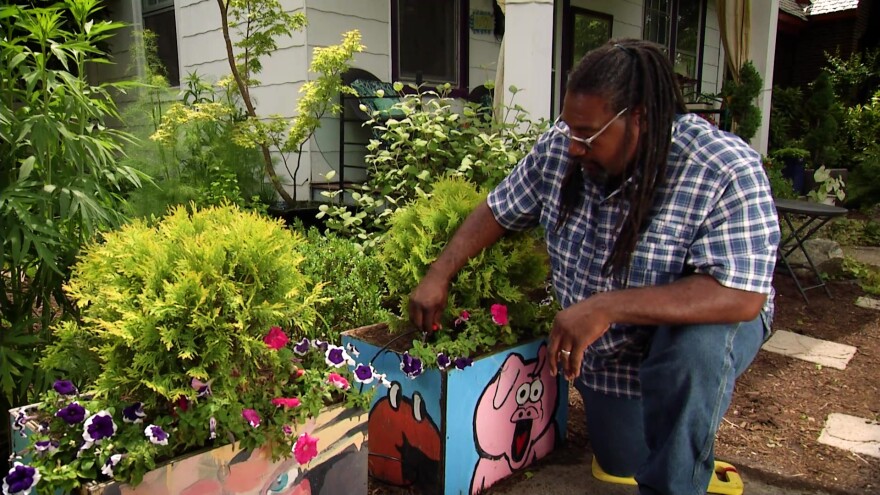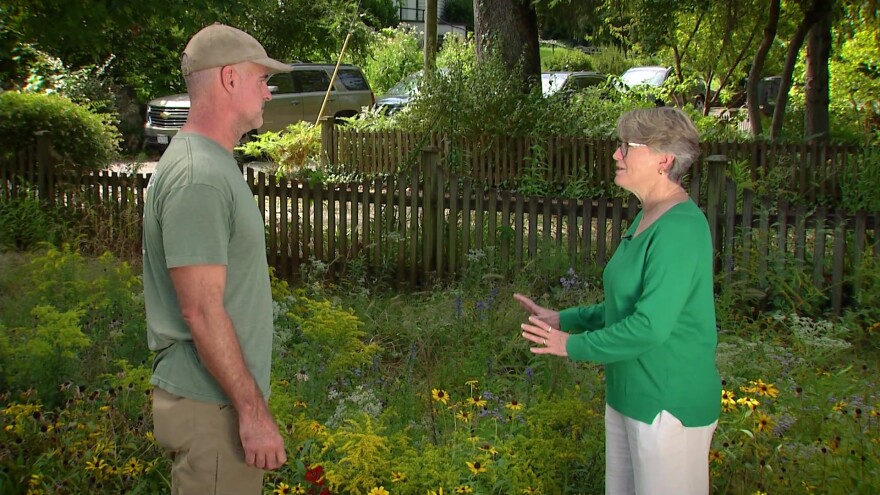In the past Good Gardening practices focused solely on the health of the plants, but today that has been broadened to include the role plants play in the environment. Sustainability is not just about growing plants but challenges us to reconsider our known practices and replace them with new ones. Over the course of my career as a professional horticulturist I have made many adjustments and encourage you to do the same by considering these tips. We are all growing and learning together, to make a difference in our environment!
-Peggy Singlemann
Plant deciduous trees to reduce home energy costs - planting trees out from the south to southwest corner of your home will provide cooling shade in the summer yet still allow the winter sun to warm the house. Learn how shade not only saves energy but also improves community health with Southside ReLeaf.

Add more food plants to your space - every pound of food grown at home helps reduce pollution generated by international food shipping. Don’t have a vegetable garden, consider food scaping! Plant kale, spinach, carrots, beets, beans, peppers, Swiss chard and eggplant to add visual textures and colors to landscape plantings. Dr. Robyn Puffenbarger shares tips to add herbs to a home landscape. No yard, no problem, Randy Battle explains how to grow vegetables in a container for a patio or deck.
Test your soil – follow the instructions on the test results to avoid adding unnecessary fertilizers. When making choices to amend the soil reach for natural and organic fertilizers. Affordable testing is offered through the Virginia Cooperative Extension.

Make a compost pile – keep plant-based food scraps and garden waste out of the landfill while improving your soil structure and microbiology. The more microbes living in the soil the healthier plants will grow. Learn more about composting in our interview with Black Bear Composting and get tips to start composting at home with a demonstration by Derrick Gooden and Peggy Singlemann.
Reduce, Reuse, Recycle - Look for products made from recycled content when purchasing planting containers and even lawn furniture. When purchasing compost or garden soil check to make sure it is sphagnum peat moss free – peat, aka sphagnum moss, was once a popular planting medium but it is a non-renewable resource. Reuse pots and seed trays, these items can be used season after season with a good cleaning before each use. You can also reuse other containers for growing - Randy Battle explains how to use a storage tub to create an affordable indoor grow chamber.

Be Water-wise - water is our most precious natural resource, steward it wisely. Harvest rainwater to reduce stormwater runoff and collect that water to use in the garden later. Shana Williams shares tips to get you started. Conserve the water that you do have, use mulch to retain soil moisture and replace sprinklers with drip irrigation or a soaker hose. Serome Hamlin demonstrates how to install a simple system.
Raise the cutting blade of your lawn mower - raising the blades to 4” shades the soil, retaining soil moisture and reducing weed growth. Also avoid herbicides, doing so will protect beneficial insects and the microbes in the soil. Did you know firefly larvae feed on slugs, snails and other soft bodies insects during their 2-year growth phase underground? The flying adults emerge and are excellent pollinators. Learn more about lawn care best practices from Virginia Tech (PDF).

Reduce lawn - native plants require less water and fertilizer than turf grass, plus they can support local wildlife including our pollinators. Learn more about transforming a home landscape in our interview with the Center for Urban Habitats. Amyrose Foll shares tips for seeding wildflowers.
Not all bugs are bad - many perceived pests are beneficial insects which eat garden pests. Always identify the insects in your garden before taking any action. Many smartphone apps are available to help ID insects and if you are still not sure you can always contact your local Extension Agent.
Avoid use of pesticides - determine your personal tolerance for pests in the garden and choose natural and organic control solutions. Remember to always read the label. Practices like using row covers in the vegetable garden will greatly reduce the opportunity for insect pests to infest the plants. This is great for root crops because they do not require pollination. Peggy Singlemann explains her approach to integrated pest management in this article.







